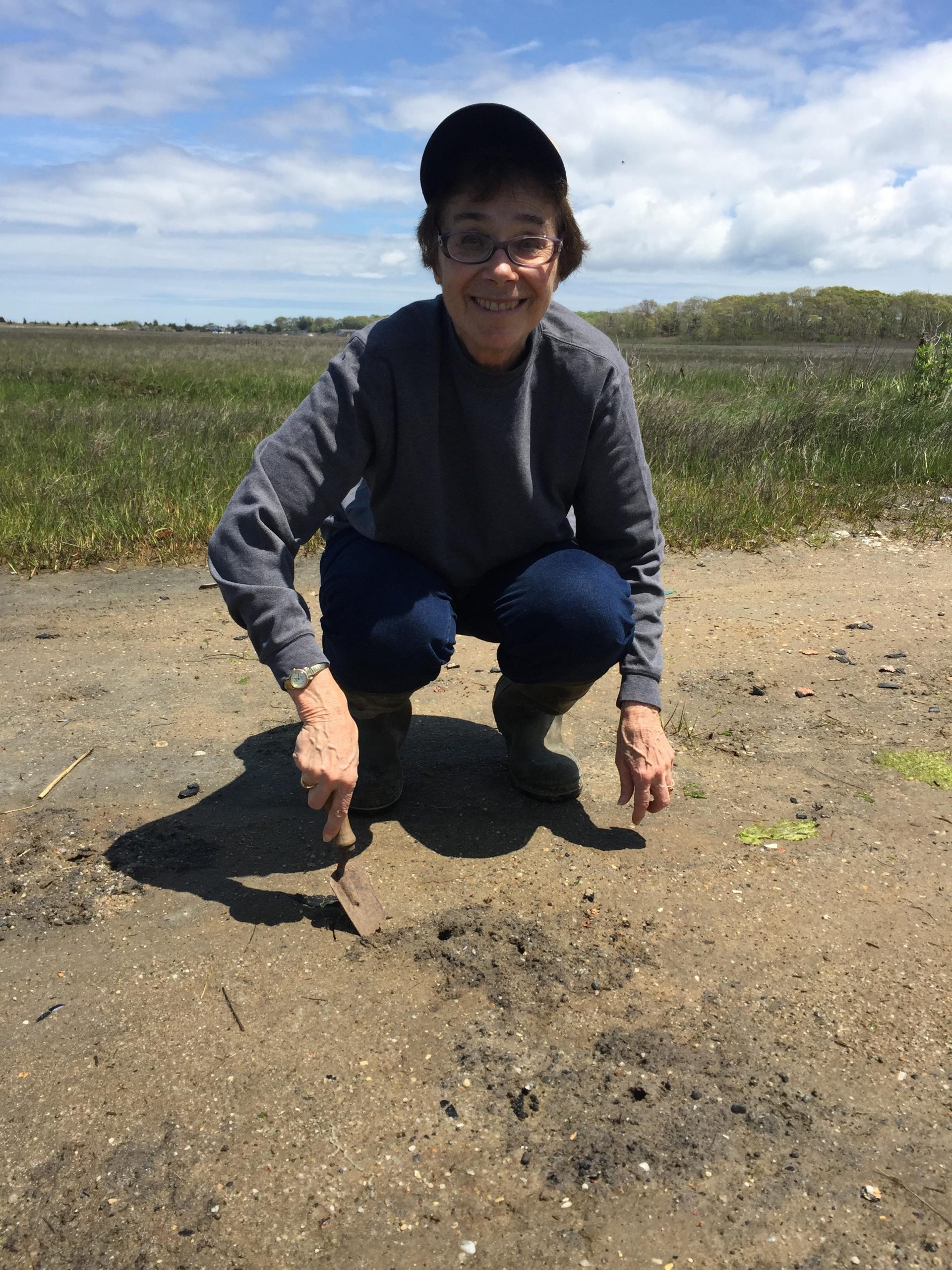Research Career
Evolution of a Research Career
1960 – At the end of my sophomore year of college, I went to the Museum of Natural History to volunteer to work on a research project over the summer. I ended up spending the summer at Woods Hole Oceanographic Institution, working on schooling behavior of fishes with Dr. Evelyn Shaw of AMNH. While there I was immersed in marine biology, which I loved, and met Pete Weis, my future husband and research collaborator, who I also loved.
Summer of 1961 – back to Woods Hole to take the Marine Ecology class at Marine Biological Lab. Esteemed faculty included Drs. Eugene Odum, Howard Sanders, and Larry Slobodkin.
1962 graduated Cornell, married Pete Weis, started graduate school at NYU. Started research with Dr. Alfred Perlmutter who had never had a female graduate student before – what to do with a girl in a fish lab?? He considered me too delicate to do field work (though I had done plenty the past two summers). Zebrafish were breeding in lab, so I worked on development of the nervous system in fish embryos and effects of nerve growth factor on its development, (but was still really more interested in marine ecology.). Starting on the faculty at Rutgers, I continued for a few years to extend studies of nerve growth factor and development to amphibians and fish behavior. Having no graduate students yet, I recruited Pete to work with me on some of these. (Weis, 1968a; Weis 1968b; Weis 1969; Weis and Weis 1970; Weis, 1972; Weis and Weis 1972, which was first paper on behavior).
Then, with Earth Day, increased interest in the environment, and the opportunity to spend summers at a marine lab in Montauk, I began migrating back to environmental research, initially by studying .EFFECTS OF CONTAMINANTS ON DEVELOPMENT. We looked at effects of pesticides (Weis and Weis 1974; 1976a,b; Solomon and Weis 1979) and metals (Weis and Weis 1976, 1977; Weis et al. 1981) on fish development and effects of various environmental factors on limb regeneration in fiddler crabs (Weis 1976, 1977, 1978; Weis and Mantel, 1976; Lee and Weis 1980). We later found that embryonic exposure to low levels of mercury, which did not cause any malformations, produced delayed effects on behavior of hatchlings (Weis and Weis 1992; Zhou et al 1996; Zhou and Weis 1999; Samson et al 2001).
While in grad school I took a biological oceanography class with ship trip and studied community of animals associated with floating Sargassum in the Gulf Stream (Weis, 1968). This was the first paper in HABITAT THEME. Subsequent wrok on HABITAT: We looked at the incidence of pea crabs in mussels from different depths (Weis and Weis, 1974), which enabled us to use our new SCUBA expertise and equipment. We also used it in studying coral reef fish use of intertidal sea wall in the intracoastal waterway (Weis and Weis, 1976). Snorkeling was enough to study fish by a sea wall and in mangroves in Indonesia (Weis and Weis 2005), mangrove fishe communities in the Caribbean (MacDonald and Weis 2013; MacDonald et al. 2008; MacDonald et al 2009) and Madagascar (Weis et al. 2008). Another series of papers in this theme compared animal association with native saltmarsh plant Spartina alterniflora compared with the invasive reed Phragmites australis in the New Jersey Meadowlands: Weis and Weis 2000; Weis et al. 2002; Robertson and Weis 2005; Yuhas et al 2005. As part of our comparison of environmental impacts of these two plants, (but not exactly “habitat”) we compared these two saltmarsh plants in terms of how they deal with metal contaminants. While both plants take up equivalent amounts from the soil into their roots, we found Spartina sends more to aboveground tissues such as stems and roots and secretes the metals from their leaves. They have salt glands to eliminate excess salt, and the metals come out with the salt and are released back into the ecosystem. In comparison, Phragmites sequesters a greater fraction down below ground. (Windham et al., 2001, 2003). Thus, the invasive species, which is disliked and often removed in restoration projects, performs important services for the environment.
Observations on embryos of the killifish Fundulus heteroclitus after exposure to methylmercury were curious and confusing. Some of the exposed embryos were almost normal while others were extremely deformed. So, we thought to separate out fertilized eggs from different females in repeat experiments and learned that some females were producing very susceptible eggs while others were producing very resistant eggs. We found certain traits of the females were associated with the susceptible vs tolerant eggs (Weis et al, 1982). These fish were all collected in relatively clean waters of Eastern Long Island. We then did identical exposures with fish from Piles Creek, Linden NJ, a highly polluted tributary of the Arthur Kill and found all these eggs were resistant (Weis et al. 1981). This was the beginning of the lengthy research theme of POLLUTION TOLERANCE IN CONTAMINATED ENVIRONMENTS (Weis and Weis 1983, 1985; Klerks and Weis 1987; Weis et al 1989).
Methylmercury tolerance was also found in grass shrimp from Piles Creek (Kraus et al. 1988, Kraus and Weis 1988). Fiddler crabs from Piles Creek were also less affected by exposure to metals (Callahan and Weis 1983; Weis 1885; Weis and Kim 1988). However, although tolerance seen in embryos was also seen in sperm and eggs of killifish from Piles Creek (Khan and Weis 1987, 1993), tolerance was not seen in juveniles or adult stages. On the contrary, they did not grow as well or live as long. However, they mature more rapidly and produce the tolerant embryos sooner (Toppin et al. 1989; Weis and Weis 1989). Thus, there seems to be some cost to the tolerance of the early life stages.
An accidental observation led to the next major thread of research. Mark Kraus was examining grass shrimp (Palaemonetes pugio) predator avoidance behavior using kiilifish from the clean site in Tuckerton NJ as predators. One day there were no more Tuckerton fish around the lab so he used Piles Creek fish. He mentioned to me that they didn’t capture the shrimp very well…leading to the study of ENVIRONMENTAL EFFECTS ON BEHAVIOR. Systematic predator/prey observations revealed that the Piles Creek killifish were indeed poor predators on grass shrimp, and also easy prey for blue crabs – by virtue of just being slow (Smith and Weis 1997; Weis et al. 2001). Instead of live food, much of their diet was detritus, which is not nutritious for them. Poor nutrition due to impaired predatory behavior is a good explanation for their observed slower growth and reduced life span. We explored underlying mechanisms for the altered behavior and found that their brain neurotransmitters were altered (Smith et al. 1995) and the thyroid glands (thyroxin affects behavior) were highly abnormal, resembling a goiter (Zhou et al. 1999). We also explored ecological effects of reduced predation on the shrimp and found that the shrimp at Piles Creek were larger and more numerous than at the cleaner reference sites, a “top-down” effect of reduced predation (Bass et al. 2001).
We also explored behavioral and other differences in fiddler crabs (Uca pugnax) from polluted and clean environments and found differences in population biology (Bergey and Weis 2008) and a clever adaptation for eliminating pollutants from their bodies – Piles Creek crabs moved most of their internal metals into their shell shortly before shedding it (Bergey and Weis 2007). A stay at a field station in a remote part of Indonesia led to a paper relating the behaviors of four different species of fiddler crabs to their major food sources (Weis and Weis 2004). Back in NJ, studies on bluefish (Pomatomus saltatrix) revealed that more contaminated (metals and PCBs) juveniles ate less and grew less than those in clean environments (Candelmo et al 2010). Furthermore, the stomach contents of juveniles (“snappers”) caught in the polluted NJ Meadowlands were often empty, reflecting poor predatory ability. The contaminant levels of the killifish and menhaden they had eaten (stomach contents) were higher than that of other killifish and menhaden that were swimming around, confirming that more contaminated organisms are easier to capture. We also examined blue crabs (Callinectes sapidus), and found that like the killifish, those from the polluted site (Hackensack Meadowlands) were poor predators (on juvenile blue crabs) (Reichmuth et al 2009). Like the killifish they also ate a lot of mud and detritus, but unlike the killifish they were not smaller in size; perhaps detritus is nutritious for them or the absence of humans fishing for them (prohibited due to pollution) but like the Piles Creek shrimp, they were large and abundant – a “top down” effect. There was a striking personality difference noted between Meadowlands blue crabs and the Tuckerton (clean) ones – Meadowlands crabs were more aggressive (Reichmuth et al 2010). Additional predator/prey projects compared prey capture and learning behavior of invasive crabs (green crab Carcinus maenas) with blue crabs (MacDonald et al 2007; Roudez et al. 2008) and found that the invasive green crabs were more effective in capturing food (mussels) and that they also learned the location of food faster than native blue crabs.
CHROMATED COPPER ARSENATE (CCA) TREATED WOOD. In the 1990s and early 2000s we did a series of studies on environmental effects of this green colored wood that is placed in estuaries in bulkheads and pilings. The very high concentrations of metals are to prevent rotting of the wood. We found that then chemicals leach out from the wood and affect nearby organisms. We found In the lab: reduced growth, impaired embryo development, and reduced fiddler limb regeneration. In the field we found community change (reduction) in epibionts the settle on the wood, community change (reduction) in benthos in mud near bulkheads, trophic transfer of copper from algae to mud snails which become inactive, and trophic transfer of copper from oysters to carnivorous snails which grow less and eat less. All these studies are summarized in Weis and Weis (1995).
ECOLOGY OF PARASITES. In the 2000s, we embarked on some ecological studies on parasites, including how metal pollutants are partitioned between hosts (killifish and grass shrimp) and their parasites, nematodes and isopods, respectively (Bergey et al. 2002). Other studies looked at how parasites alter host (grass shrimp and killifish) behavior (Bass and Weis 1999; Bass and Weis 2009). We also examined effects of marsh restoration on the incidence of parasitism (Bass and Weis 2007).
Since retirement in 2010, I have not been able to do lab research, but have written several books (see section on Books), and published overviews, commentaries, critiques, etc. I have become interested in microplastics and ocean acidification and have contributed to overviews and critiques on these topics. I have also collaborated with a Criminal Justice professor on illegal capture of crabs and lobsters, and on illegal imports of corals into the US for reef aquariums.

